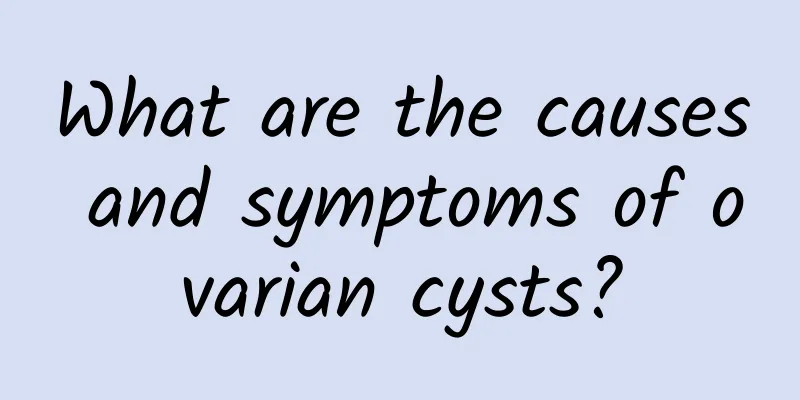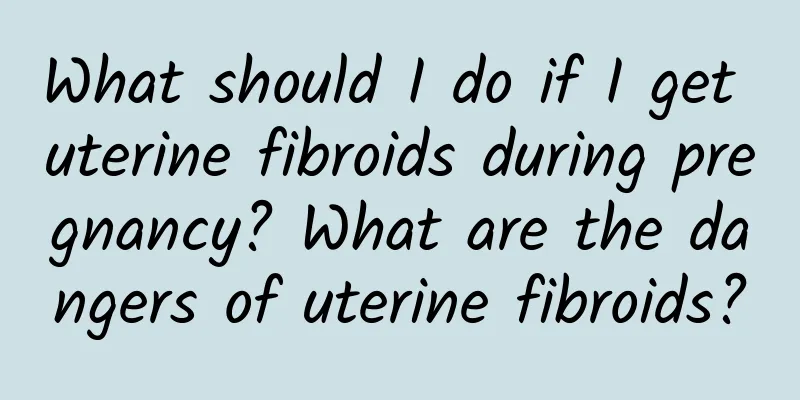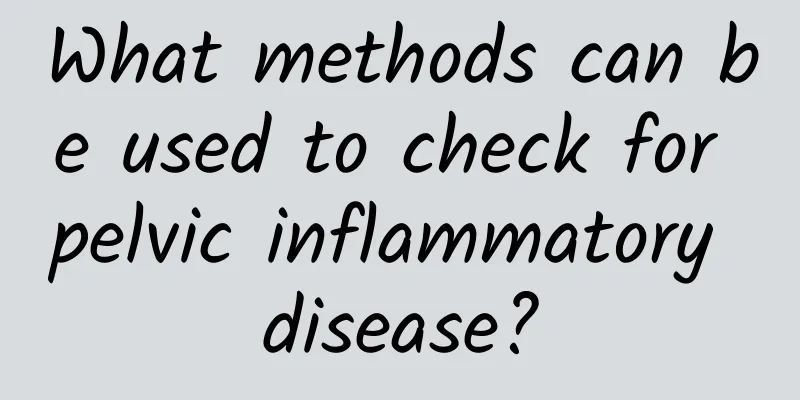What to do if female pelvic peritonitis recurs

|
The treatment methods of female pelvic peritonitis are worthy of everyone's attention, because pelvic peritonitis is a disease that causes many women to suffer, and its harm can even lead to infertility, so everyone must find a way to correctly understand and treat this disease. So what are the treatment methods for female pelvic peritonitis? The following are specific suggestions given by experts. Female friends with pelvic peritonitis should pay attention not to sit for too long in daily life, do some exercise from time to time, and it is best not to sit for more than 2-3 hours a day. They should also eat more light food, such as eggs, green vegetables, and tofu. Be careful not to eat too much raw, cold, or irritating food. Pay attention to your own work and rest routine, ensure adequate sleep time and good sleep quality, and most importantly, maintain a happy mood, do not be sulky, and do not be impatient, which is very helpful for the recovery of the disease. If the following situations occur, you should go to a regular hospital to find a professional doctor for surgical treatment in time: adnexal abscess with no improvement in symptoms after 49-72 hours of antibiotics and other drug treatment; cervical or uterine adhesions causing the patient to have reduced menstruation, amenorrhea, cyclical abdominal pain, and infertility; inflammatory mass that gradually increases in size and has repeated acute attacks; inflammation causing primary or secondary infertility. Do not take medicine on your own. Patients should not take medicine just because someone around them says that they have taken it. Instead, they should go to the hospital and let the doctor check their specific condition and prescribe the right medicine. First, use Fuyankang tablets, which can clear away heat and dampness, regulate qi and activate blood circulation. This can relieve the pain of the lower abdomen, effectively inhibit bacterial growth, and prevent the aggravation of pelvic peritonitis. Acute pelvic peritonitis refers to acute inflammation of the female internal reproductive organs and the surrounding connective tissues and pelvic peritonitis. It can be confined to one site or several sites can be affected at the same time. Common pathogens are staphylococci, streptococci, Escherichia coli, anaerobic bacteria and sexually transmitted pathogens, such as gonococci, mycoplasmas, chlamydia, etc. It is caused by spreading to the pelvic cavity through the lymphatic, blood or directly. Common acute endometritis, myometritis, salpingitis, pyosalpinx, tubo-ovarian abscess, pelvic connective tissue inflammation, pelvic peritonitis, severe cases can cause sepsis and sepsis. If not controlled in time, septic shock or even death may occur. Typical symptoms are fever, lower abdominal pain that refuses to be pressed, and a large amount of leucorrhea that is purulent. It may be accompanied by fatigue, back pain, and menstrual disorders. In severe cases, high fever, chills, headache, and loss of appetite can be seen. If there is peritonitis, digestive system symptoms such as nausea, vomiting, and abdominal distension may occur. If an abscess is formed, bladder irritation symptoms may occur in the front, such as frequent urination, urgency, and pain when urinating; rectal irritation symptoms may occur in the back, such as tenesmus, anal swelling, diarrhea, and difficulty in defecation. When sepsis occurs, it is often accompanied by abscess lesions in other parts of the body. Chronic pelvic peritonitis refers to chronic inflammation of the female internal reproductive organs and the surrounding connective tissues and pelvic peritoneum. Its main clinical manifestations are menstrual disorders, increased leucorrhea, waist and abdominal pain, and infertility. If chronic adnexitis has formed, a mass may be felt. Systemic symptoms are mostly not obvious, sometimes with low fever, susceptibility to fatigue, and a long course of illness. Some patients may have symptoms of neurasthenia. Scar adhesions and pelvic congestion caused by chronic inflammation can cause lower abdominal distension, pain, and lumbosacral soreness, which often worsens before and after fatigue, sexual intercourse, and menstruation. Pelvic peritonitis must be treated symptomatically, and different treatment methods are used according to the different causes of each woman. Oral medication and physical therapy are usually used, and warm benign stimulation can promote local blood circulation in the pelvis. Improve the nutritional status of tissues and increase metabolism to facilitate the absorption and disappearance of inflammation. Commonly used are shortwave and ultrashort wave. Surgery is feasible for lumps such as hydrosalpinx or tubo-ovarian cysts; small infection foci that repeatedly cause inflammation are also suitable for surgical treatment. The principle of surgery is to completely cure the disease, avoid the chance of recurrence of residual lesions, perform unilateral adnexectomy, and perform hysterectomy plus bilateral adnexectomy when necessary. Ovarian function should be preserved as much as possible for young women. The effect of single therapy for chronic pelvic peritonitis is poor, and comprehensive treatment is appropriate. It is recommended that female friends go to a local professional gynecological hospital for timely diagnosis and treatment, and must not take medication on their own. If the medication is not appropriate, it may aggravate the condition. Treatment should be continued to prevent recurrence. Regarding the treatment methods of female pelvic peritonitis, everyone must have a positive understanding and pay attention to it. After all, everyone wants to understand this disease as soon as possible and actively help everyone find the most suitable treatment method. Of course, in order to ensure everyone's health, it is also necessary for everyone to actively go to a professional tertiary hospital to treat the disease. Only correct treatment can reduce the risk of the disease. |
<<: Why does female pelvic peritonitis recur?
>>: Why is chronic pelvic peritonitis prone to recurrence?
Recommend
Female adnexitis is prone to recurrence, seriously disturbing women's lives
When female friends have chills, headaches, loss ...
A brief analysis of common symptoms of irregular menstruation
Many female friends may know about irregular mens...
Key points of syndrome differentiation for uterine fibroids
Uterine fibroids, also known as uterine leiomyoma...
What are the symptoms of uterine fibroids and how to treat uterine fibroids
Women with uterine fibroids will seriously affect...
Current status of nursing care for hyperprolactinemia
In life, many women are actually quite familiar w...
What medicine is effective in treating endometriosis?
Endometriosis often requires medication to reliev...
Rather than quick weight loss, you need a strategy to prevent weight gain
In the experience of helping nearly 2,500 people ...
What are the precautions after ectopic pregnancy surgery?
What are the precautions after ectopic pregnancy ...
How to take care of uterine fibroids after surgery What can I eat after uterine fibroids surgery
Although uterine fibroids are benign fibroids, th...
The best way to lose weight is to drink egg energy soup! 6 tips for a high-value-for-money weight loss diet
Don’t lose weight if it hurts your body, lose wei...
The most advanced method for diagnosing cervical precancerous lesions
Nowadays, people are still afraid of cancer. Peop...
Check-up items before abortion surgery
Abortion is very common. This operation takes a s...
What are the early symptoms of women's incomplete abortion? Women's incomplete abortion is prone to 3 symptoms in the early stage
Although the abortion technology is very advanced...
What is the reason for light menstrual blood? It is an abnormal condition
Very light menstrual blood is an abnormal conditi...
What to do if the endometrium is thick
Endometrial thickening refers to the thickness of...









